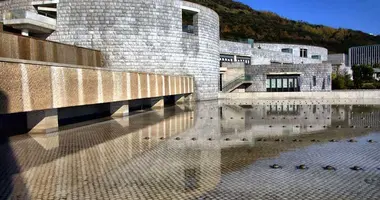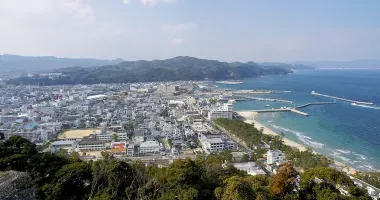Akashi Kaikyo Bridge: A marvel of modern engineering connecting Honshu and Awaji Island
- Published on : 28/01/2024
- by : Japan Experience
- Youtube
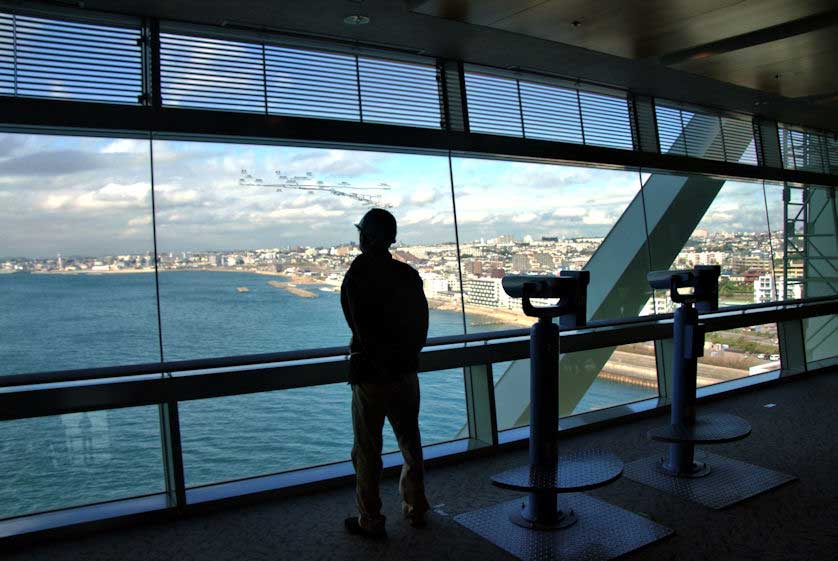
Observation lounge 50 meters above the water at the Maiko Marine Promenade of Akashi Kaikyo Bridge
The Akashi Kaikyo Bridge, also known as the Pearl Bridge, stands as a testament to human ingenuity and engineering prowess. Spanning the turbulent Akashi Strait, this magnificent suspension bridge connects the city of Kobe on Honshu to Awaji Island. Completed in 1998, it held the title of the world's longest suspension bridge for over two decades. With its impressive 1,991-meter central span and total length of 3,911 meters, the bridge not only serves as a vital transportation link but also as a symbol of Japan's technological advancement.
Overview and significance of the Akashi Kaikyo Bridge
The Akashi Kaikyo Bridge is a crucial component of the Kobe-Awaji-Naruto Expressway, forming part of the Honshu-Shikoku Bridge Project. This ambitious project aimed to create three routes across Japan's Inland Sea, connecting the main islands of Shikoku and Honshu. The bridge's construction was primarily motivated by safety concerns following tragic ferry accidents in the Akashi Strait, particularly the 1955 incident that claimed 168 lives.
The bridge's significance extends beyond its practical use. It stands as a symbol of Japan's engineering excellence and resilience in the face of natural disasters. The structure's ability to withstand powerful typhoons, earthquakes, and strong sea currents showcases the country's commitment to creating safe and durable infrastructure.
Design and construction: Overcoming engineering challenges
The design and construction of the Akashi Kaikyo Bridge presented numerous challenges due to the harsh environmental conditions of the Akashi Strait. Engineers had to contend with deep waters, strong currents, frequent typhoons, and the ever-present risk of earthquakes.
The bridge's design incorporates several innovative features to ensure its stability and durability:
- A dual-hinged stiffening girder system allows the structure to withstand winds of up to 286 kilometers per hour
- Tuned mass dampers in the towers counteract wind-induced oscillations
- The truss-stiffened deck design enhances aerodynamic stability
- High-strength steel cables with a diameter of 112 centimeters support the massive structure
Construction began in 1988 and involved over 100 contractors. The process was divided into several stages, including the creation of the foundation caissons, erection of the towers, and installation of the main cables and deck. One of the most challenging aspects was the construction of the foundations in waters up to 60 meters deep with strong currents.
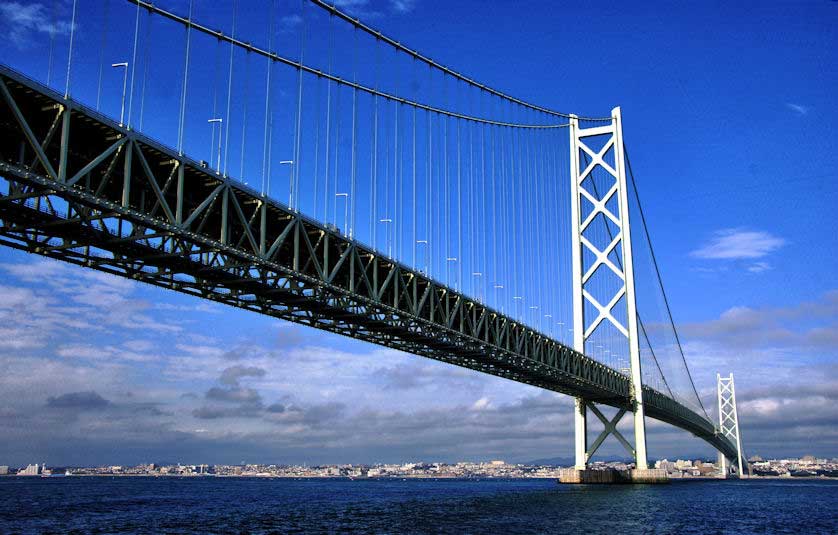
The Longest Suspension Bridge in the World, the Akashi Kaikyo Bridge
Structural features and impressive statistics
The Akashi Kaikyo Bridge boasts several impressive features that contribute to its status as an engineering marvel:
- Total length: 3,911 meters
- Central span: 1,991 meters (the longest in the world when completed)
- Two side spans: 960 meters each
- Tower height: 282.8 meters above sea level
- Clearance below the bridge: 65.72 meters
- Cable diameter: 112 centimeters
- Total wire length in cables: 300,000 kilometers
- Number of wire strands per cable: 36,830
The bridge's statistics are truly staggering, reflecting the immense scale of this engineering achievement. It can expand up to 2 meters due to heat over the course of a day, showcasing the flexibility built into its design.
Historical context and the bridge's impact on transportation
The Akashi Kaikyo Bridge's construction was part of a larger initiative to improve transportation links between Japan's main islands. Before its completion, the Akashi Strait was crossed by ferries, which were vulnerable to harsh weather conditions and accidents.
The bridge's opening in 1998 marked a significant improvement in transportation safety and efficiency. It now carries approximately 23,000 vehicles daily, providing a reliable link between Kobe and Awaji Island. This has had a profound impact on the region's economy, facilitating trade and tourism.
The bridge's construction also coincided with a period of rapid technological advancement in Japan. Its completion showcased the country's engineering capabilities on a global stage, further cementing Japan's reputation as a leader in infrastructure development.
Experiencing the bridge: Visitor attractions and viewpoints
The Akashi Kaikyo Bridge is not just a functional structure but also a popular tourist attraction. Visitors can experience the bridge in several ways:
- Akashi Kaikyo Bridge Exhibition Center: Located on the Kobe side, this center offers displays and information about the bridge's construction and technology.
- Akashi Kaikyo Bridge Guided Tour: Known as "Bridge World," this tour allows visitors to climb to the top of the bridge's 300-meter tall towers for panoramic views.
- Maiko Marine Promenade: A glass-enclosed walkway beneath the bridge deck, offering views of the Akashi Strait and the bridge's interior structure.
- Maiko Park: Located near the bridge, this park provides excellent views and photo opportunities.
The bridge is particularly spectacular at night when it's illuminated by 1,737 lights, creating a dazzling display that can be seen from miles away. The lighting system uses a combination of colors and patterns, often changing for special occasions and holidays.
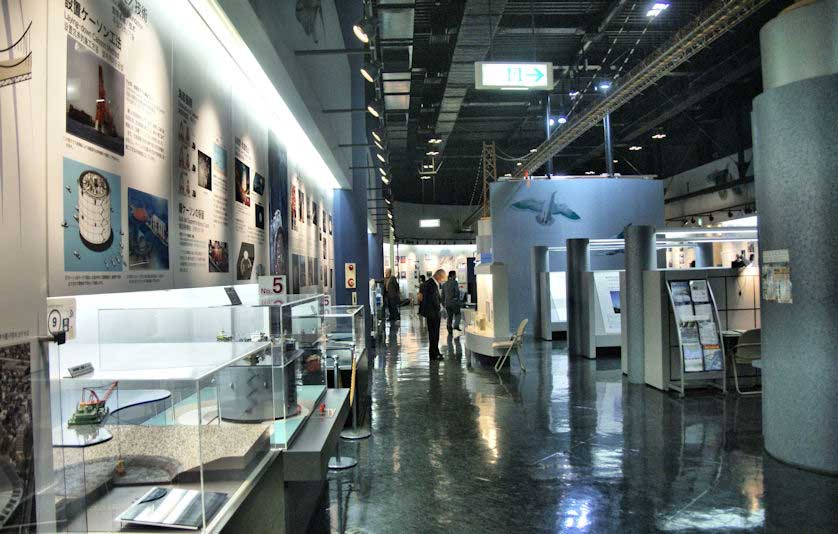
Inside the Akashi Kaikyo Bridge Exhibition Center with displays showing the history of the world's longest suspension bridge
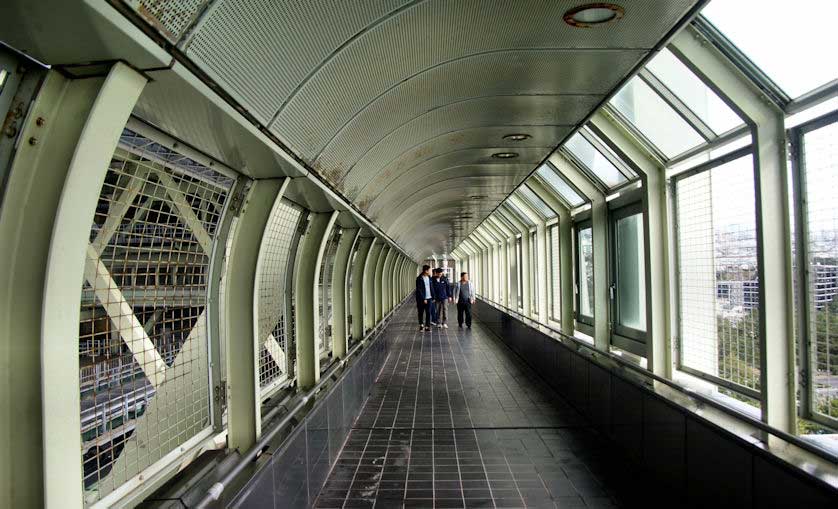
The Maiko Marine Promenade below the Akashi Kaikyo Suspension Bridge

There are several historic buildings in Maiko Park, including the former home of Sun Yat-sen, the founding father of the Chinese Republic; in the background is the Former Residence of Sanji Muto (aka the Former "Kanebo Maiko Club")
Technological innovations and safety measures
The Akashi Kaikyo Bridge incorporates numerous technological innovations to ensure its safety and longevity:
- Wind resistance: The bridge can withstand typhoon-strength winds of up to 286 km/h.
- Earthquake protection: Designed to withstand earthquakes up to magnitude 8.5, the bridge employs tuned mass dampers to counteract seismic forces.
- Corrosion prevention: A dry air injection system in the main cables helps prevent corrosion by maintaining low humidity levels.
- Aerodynamic design: The truss structure and stabilizing fins reduce wind-induced vibrations.
- High-strength materials: The use of advanced high-tensile steel allows for a lighter yet stronger structure.
Regular inspections and maintenance are carried out to ensure the bridge's continued safety and functionality. The bridge's design allows for easy access to critical components for inspection and repair.
The Akashi Kaikyo Bridge's place in Japan's infrastructure
The Akashi Kaikyo Bridge holds a special place in Japan's infrastructure landscape. It represents the pinnacle of the country's bridge-building expertise and serves as a model for future large-scale infrastructure projects.
As part of the larger Honshu-Shikoku Bridge Project, it plays a crucial role in Japan's transportation network, facilitating movement between the country's main islands. The bridge has significantly improved connectivitybetween Kobe and Awaji Island, boosting economic activities and tourism in the region.
Moreover, the bridge stands as a symbol of Japan's resilience and technological prowess. Its ability to withstand natural disasters, as demonstrated during the 1995 Great Hanshin Earthquake, reinforces public confidence in the country's infrastructure.
The Akashi Kaikyo Bridge continues to inspire engineers and architects worldwide, influencing the design and construction of long-span bridges globally. Its legacy extends beyond its physical presence, serving as a benchmark for engineering excellence and a testament to human achievement in overcoming natural challenges.
